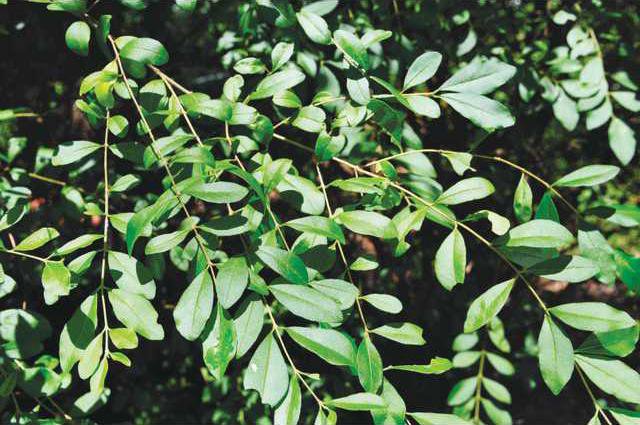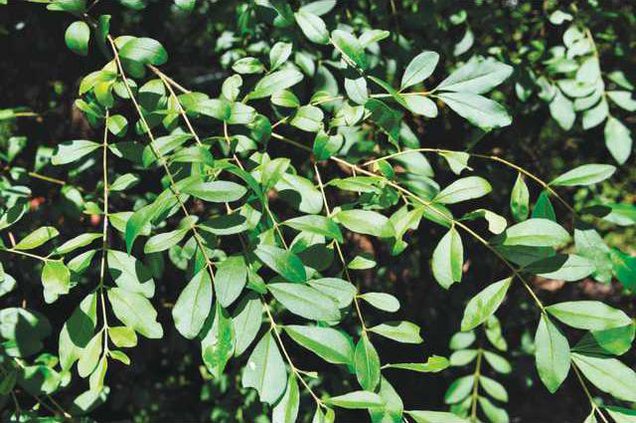Got privet?
Get rid of it:
Take the privet down by thirds with long-handled pruning shears, working from the top down. Once foliage is cut away from the trunk, you'll be able to see and deal with the root system.
Start digging about 2 feet from the trunk of the privet. When you hit a root you can't break with the shovel point, cut it with a hatchet.
Go for the tap root when you've dug in a full circle around the privet. Tap roots can go several feet down, so dig deep enough to get all of it you can, prying up gently as you go. Pull the stump out of the soil and discard it.
Move out another 2 feet and dig out the shallow side roots. Get as many of them as possible to prevent privet from re-sprouting.
If you want to eradicate privet completely, target spray them with glyphosphate herbicide, being careful not to spray surrounding foliage.
Source: www.ehow.com
State Botanical Garden of Georgia
When: The Garden grounds are open daily 8 a.m. to 6 p.m. October-March, and 8 a.m. to 8 p.m. April-September, except University of Georgia holidays.
Where: 2450 S. Milledge Ave., Athens
More info: 706-542-6159, www.uga.edu/botgarden.
When a landscaper arranges a garden, they typically put specific plants in certain areas — confident they will stay in that one place.
However, there are other plants, such as Chinese privet, that can spread like wildfire.
"Chinese privet is an evergreen shrub native to China that was introduced to the USA in the 1850s for its horticultural value," said Jim Affolter, director of research and conservation at the State Botanical Garden of Georgia.
"It is a common landscape plant. It belongs to the olive family, and it produces small fruits dispersed by birds that look like tiny black cocktail olives. During the last 100 years, it has spread in the wild to the point where it now dominates many (areas in Northeast Georgia)."
"Invasive plant removal and stream restoration are two of our primary challenges and concerns in Chicopee Woods," said Andrea Timpone, Elachee Nature Science Center president and CEO.
"Privet is one of many invasive plants that we have here. Through the years, with grant money and some local funds, we have treated about 30 acres of invasive plants."
Besides being a nuisance to many Hall County gardeners, the plant has also over-extended its welcome at the State Botanical Garden in Athens.
"Some of the most popular walking trails at the botanical garden follow the banks of the Middle Oconee River that borders our property," Affolter said.
"This area is a mature floodplain forest with an intact canopy of trees like sweet gum and sycamore, but the understory has been almost completely taken over by the privet.
"The privet chokes out the native shrubs and herbaceous plants, and it grows so densely that in many places it is difficult to walk through it."
To help with their Chinese privet problem, the garden's staff applied for, and received, a grant from the Institute of Museum and Library Services.
The $135,000 grant, which will be spread over two years, will help the staff clear the invasive plant and replace it with native species.
"This grant is so much more than habitat restoration for 5 acres of forest. One of the best parts is that this grant reinforces the fact that a living plant collection is a vital public resource, part of our state's heritage, as important as a museum or library collection," Affolter said.
"We will use UGA undergraduate students to assist in clearing invasive Chinese privet, survey the vegetation, plant native species and monitor the change. This process will be used to generate a set of recommendations for floodplain restoration for landowners and land managers who wish to address the habitat devastation caused by Chinese privet."
Some of the potential plants that will replace the privet are buttonbush, spider lily and giant cane — all of which can be used in residential landscaping, Affolter says.
According to state garden staff, replacing the invasive plant with native ones is crucial to maintaining an environmental balance.
"When (the Chinese privet) escapes cultivation and invades a natural habitat, it grows in such dense thickets that other species are crowded and shaded out. This includes the seedlings of the canopy trees that normally grow (in that area)," Affolter said.
"To maintain native plant diversity, and the diversity of the insects, pollinators, etc., that feed on the native plants, it is necessary to remove the privet."

